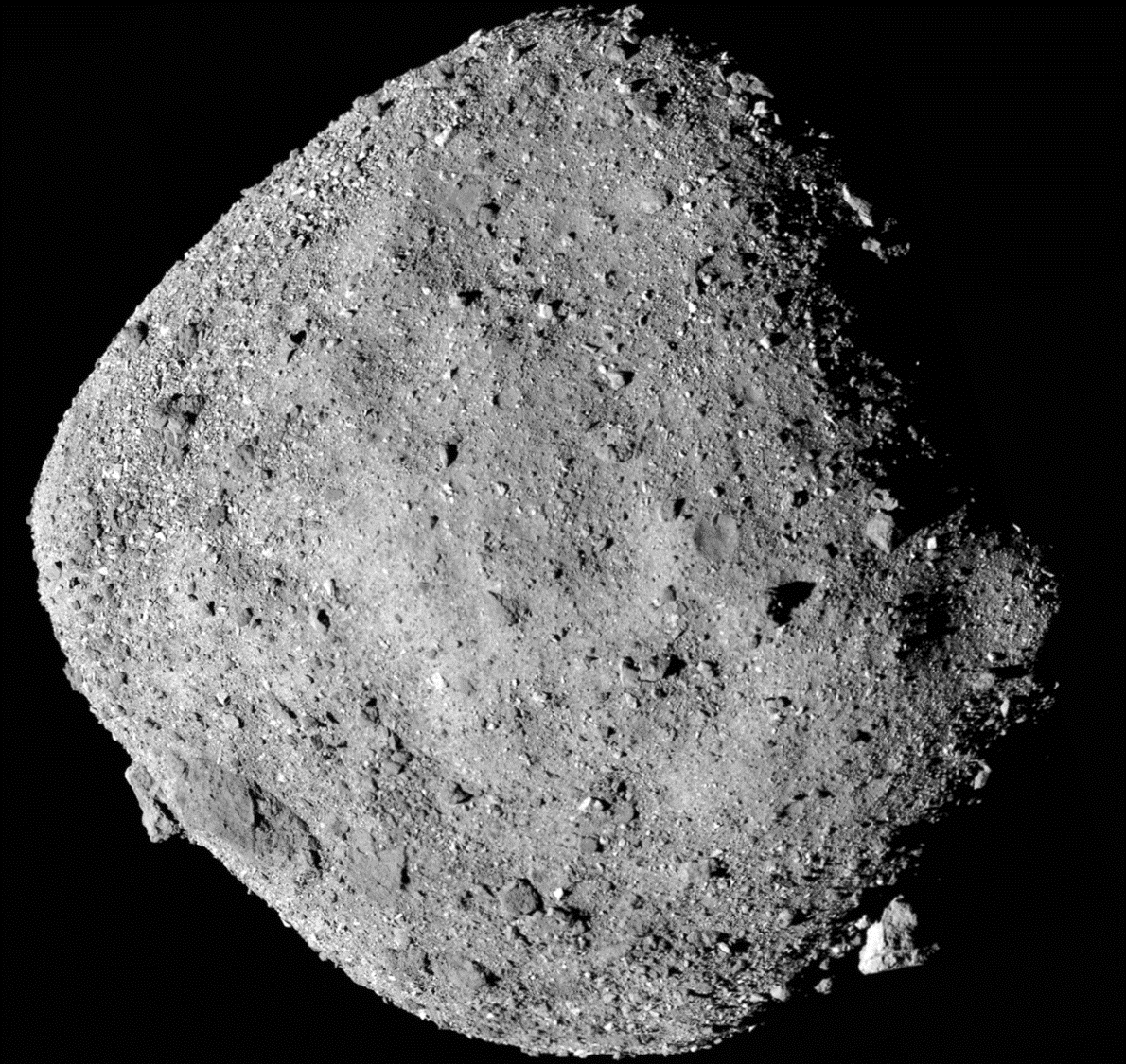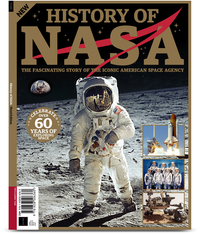
NASA's asteroid-sampling OSIRIS-REx probe will spend two extra months at its target space rock before heading back to Earth.
OSIRIS-REx snagged lots of dirt and rock from the 1,640-foot-wide (500 meters) near-Earth asteroid Bennu in October 2020 — so much stuff, in fact, that the probe's sample collector was literally overflowing.
The original mission plan called for OSIRIS-REx to leave Bennu's vicinity with this precious cargo on March 3. But the departure date has been pushed back to May 10, NASA officials announced Tuesday (Jan. 26).
Related: NASA's OSIRIS-REx asteroid-sampling mission in pictures
"Leaving Bennu's vicinity in May puts us in the 'sweet spot,' when the departure maneuver will consume the least amount of the spacecraft's onboard fuel," Michael Moreau, OSIRIS-REx deputy project manager at NASA's Goddard Space Flight Center in Greenbelt, Maryland, said in a NASA statement.
"Nevertheless, with over 593 miles per hour (265 meters per second) of velocity change, this will be the largest propulsive maneuver conducted by OSIRIS-REx since the approach to Bennu in October 2018," Moreau added.
The new plan doesn't change the ETA for the Bennu samples. They're still scheduled to come down to Earth, in a special return capsule, in northern Utah on Sept. 24, 2023, NASA officials said in the same statement. (That touchdown will complete a recent sample-return trifecta for humanity: Pristine samples from the moon and the asteroid Ryugu came down to Earth last month, courtesy of China's Chang'e 5 mission and Japan's Hayabusa2 probe, respectively.)
Get the Space.com Newsletter
Breaking space news, the latest updates on rocket launches, skywatching events and more!
History of NASA: $22.99 at Magazines Direct
Discover the story of how and why NASA was created, its greatest triumphs, darkest days, and of the times it exceeded all possible hopes. A tale of adventure, heroism and resourcefulness, learn of the space agency's greatest achievements and how — over six decades — the organization has consistently and tirelessly devoted itself to its founding principle: that "activities in space should be devoted to peaceful purposes for the benefit of all humankind".
Fuel efficiency isn't the only potential benefit of the new Bennu departure date. The OSIRIS-REx team is studying the feasibility of performing one last close flyby of the asteroid, a "farewell tour" in April that would take the probe within just 2 miles (3.2 kilometers) of Bennu's rugged surface.
"We want to go back and say goodbye to Bennu and also document the state of the surface post-TAG," OSIRIS-REx principal investigator Dante Lauretta, of the University of Arizona, said Tuesday during a virtual presentation at the 24th meeting of NASA's Small Bodies Assessment Group. "We're optimistic that we're going to be able to do this, but it's not guaranteed yet."
"TAG" is a reference to OSIRIS-REx's Oct. 20 "touch and go" sample-collection event, which disturbed Bennu's surface considerably where it happened, the floor of a 65-foot-wide (20 m) crater called Nightingale. The spacecraft's collector head penetrated 1.6 feet (48.8 centimeters) into the asteroid, Lauretta said. And OSIRIS-REx's thrusters stirred things up further during the probe's "backaway burn" that day.
OSIRIS-REx may have yet more work to do after wrapping up the farewell tour and dropping the Bennu samples off here on Earth. In 2022, the mission team plans to submit to NASA a proposal for an extended mission, which might involve sending OSIRIS-REx to study the potentially dangerous asteroid Apophis up close just after the asteroid's close flyby of Earth in April 2029.
"This could be a rendezvous mission," Lauretta said. "We could put the spacecraft into orbit; we could do all the global and site-specific characterization, like we did at Bennu. All the sample-return hardware would be gone."
Early analyses suggest that there's no chance OSIRIS-REx could gravitationally nudge Apophis through a "keyhole" that would set the asteroid on a future collision course with Earth, as long as the probe's arrival occurred after Apophis' April 2029 flyby of our planet, Lauretta added.
"But we will continue to look at that," he said.
Another possibility for the extended-mission proposal, Lauretta added, is a rendezvous with the asteroid 1999 FA, which would occur sometime before the envisioned Apophis arrival.
Mike Wall is the author of "Out There" (Grand Central Publishing, 2018; illustrated by Karl Tate), a book about the search for alien life. Follow him on Twitter @michaeldwall. Follow us on Twitter @Spacedotcom or Facebook.
Join our Space Forums to keep talking space on the latest missions, night sky and more! And if you have a news tip, correction or comment, let us know at: community@space.com.

Michael Wall is a Senior Space Writer with Space.com and joined the team in 2010. He primarily covers exoplanets, spaceflight and military space, but has been known to dabble in the space art beat. His book about the search for alien life, "Out There," was published on Nov. 13, 2018. Before becoming a science writer, Michael worked as a herpetologist and wildlife biologist. He has a Ph.D. in evolutionary biology from the University of Sydney, Australia, a bachelor's degree from the University of Arizona, and a graduate certificate in science writing from the University of California, Santa Cruz. To find out what his latest project is, you can follow Michael on Twitter.












